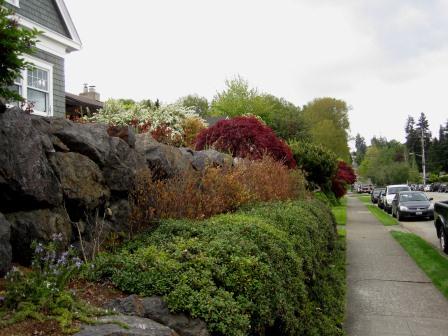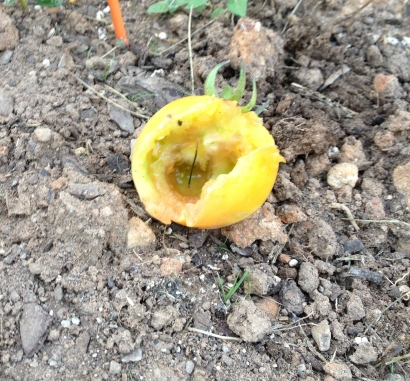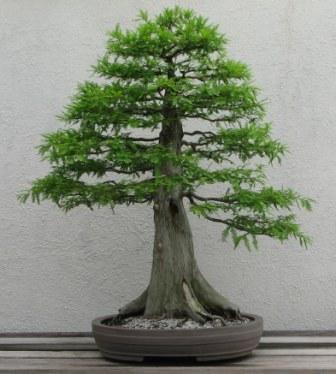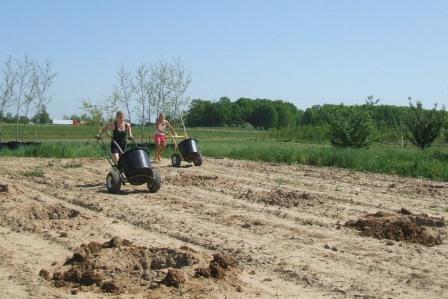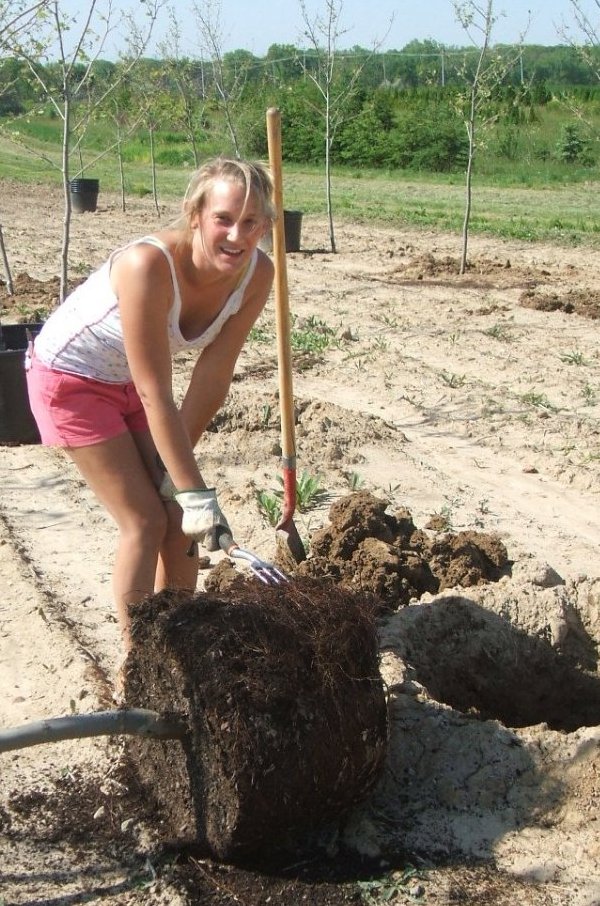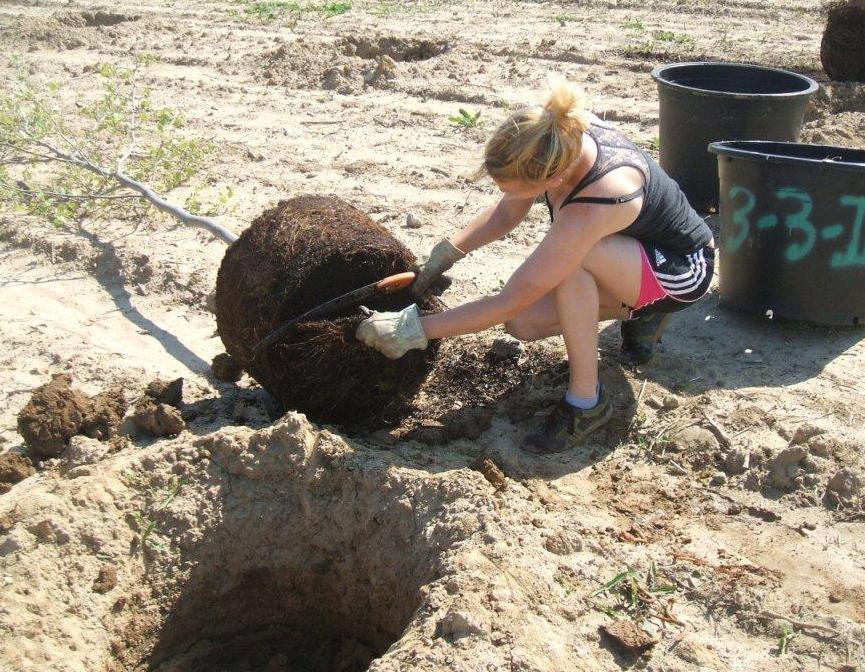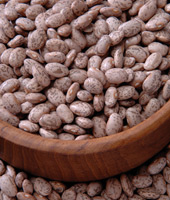One of the planting practices that severely vexes me is the Pop-n-Drop (TM) method, where plants are popped out of the container and dropped into a hole roughly the same size. When I’m lucky enough to find such installations in progress, I try to take as many photos as possible for later comparisons. Here’s one such landscape that was installed in this manner:
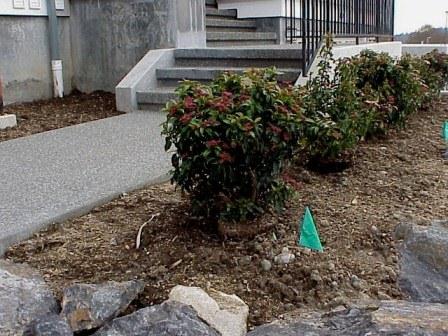
A row of Pop-n-Drops in 2002
And here’s the same landscape 10 years later:
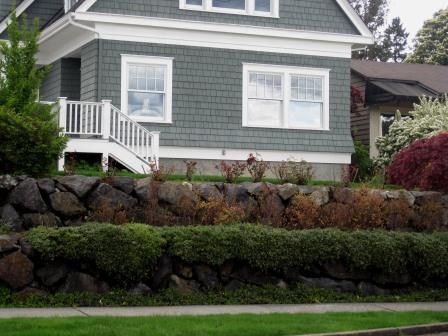
Two rows of Pop-n-Drops in 2012
Some of the shrubs survived, some did not, and certainly none of them are thriving. You can see that the shrubs have remained about the same height after a decade of “growth.” Yet this practice continues to be SOP for many landscaping companies all in the name of shaving off a few minutes of labor and making a few more $$.
We GPs can (and do!) disagree about how much root preparation is needed before planting containerized and B&B trees and shrubs. But I don’t think any of us would recommend NO root preparation.
(Additional note: the “before” photo is the side of the landscape that faces west. Those shrubs are gone. The “after” photo is facing south (this is a corner lot). All of the landscapes were put in at the same time, in the same fashion. Unfortunately I didn’t take photos of the south facing landscape when it was put in, and the one that failed on the west was replaced before I knew it had died. Sorry for not including this explanation initially.)
And here is the 2012 landscape from a closer viewpoint; note the dead shrub on the left end of the lower row. The others are all failing, in both this row and the upper row:
